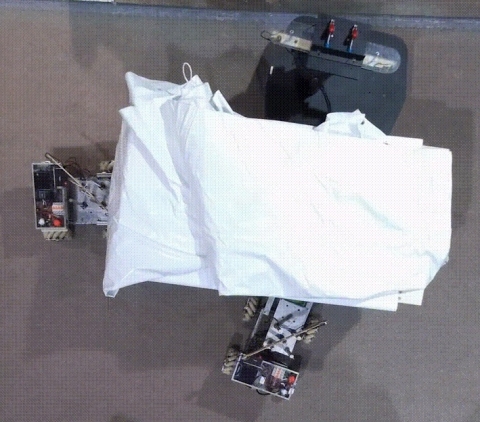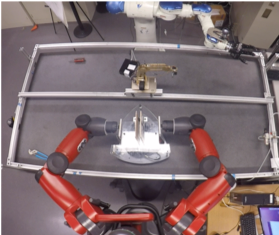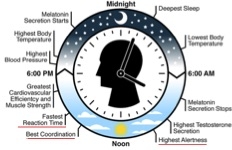Industrial robots are increasingly deployed in applications requiring an end effector tool to closely track a specified path, such as in spraying and welding. Performance and productivity present possibly conflicting objectives: tracking accuracy, path speed, and speed uniformity. Industrial robots are programmed through motion primitives consisting of waypoints connected by pre-defined motion segments, with specified parameters such as path speed and blending zone.
Current Projects
A swarm of five mobile robots of three different designs is successfully demonstrated. Operator bending, twisting, lifting and tugging motions associated with RF welding of large tent pieces are reduced by approximately 50%. Without any optimization and using prototype robots, the average material transport time for this operation is shown to already equal current manual cycle times. A Swarm Controller is demonstrated that enables control of individual holonomic or non-holonomic robots and control of a user-defined swarm configuration.
This project aims to develop technology and perform ground-based testing to support operations for potential satellite servicing missions and assist in utilizing these technologies for future space exploration activities. The focus of this work applies robotic technologies to enable robotic tasks to be performed at regions of space that are unreachable by human space exploration to date. This task will require the development of advanced robotic space technologies and engineering research needed to provide infrastructure to support the Goddard Space Flight Center Satellite Servicing Projects Division (SSPD) plans to service orbiting space assets.
The goal of the project is to determine personalized optimal strategies for circadian rhythm regulation and scheduling of tasks and sleep to optimize mental performance of mission performers. Towards this goal, this project will focus on four directions of research: 1. Analyzing mathematical models that include both circadian and sleep processes. 2. Developing optimal algorithms for entrainment. 3. Developing optimal strategies for maximizing mental alertness during critical missions. 4. Developing state estimation algorithms that will allow for the implementation of the optimal strategies in the closed-loop.







